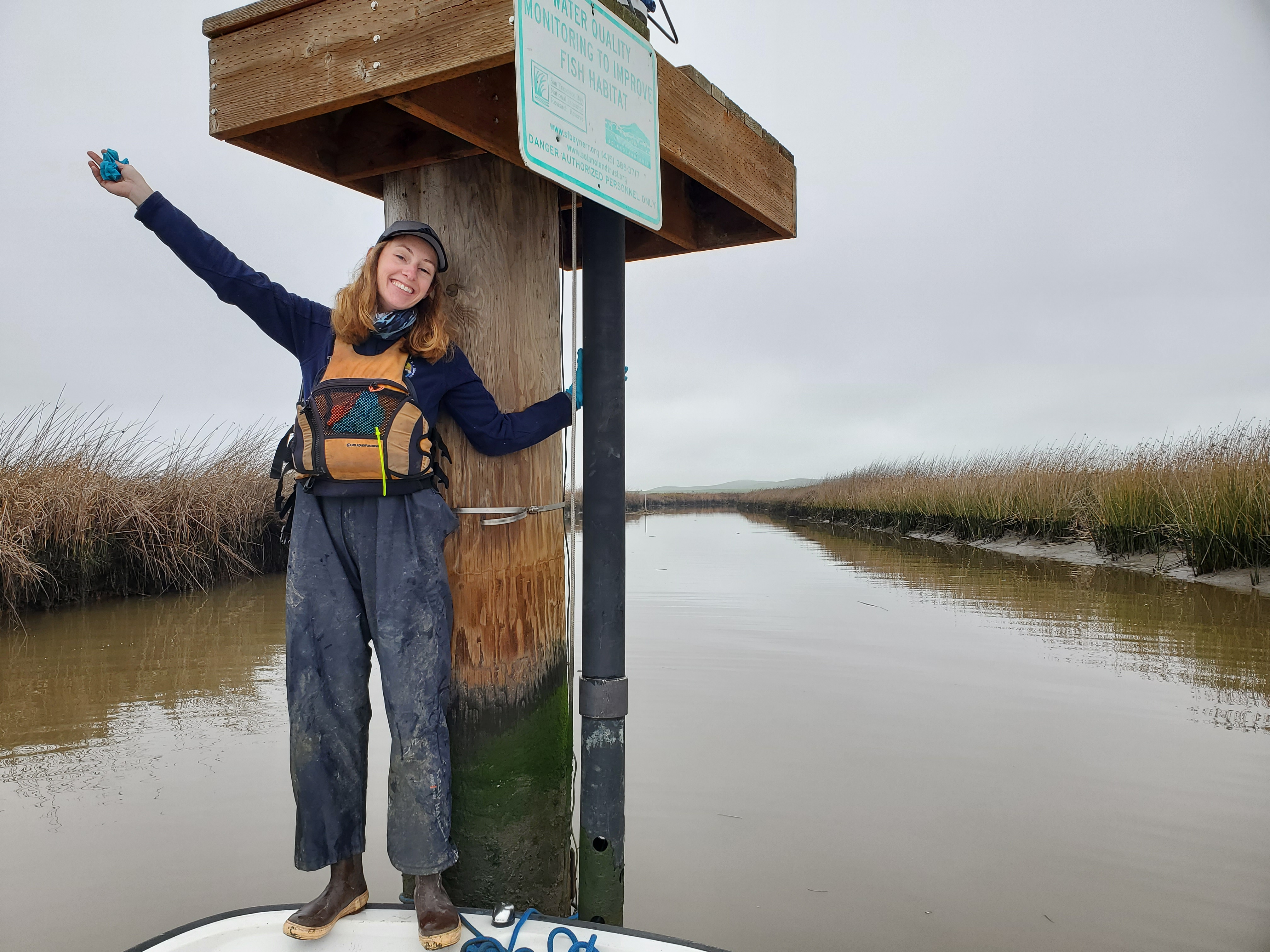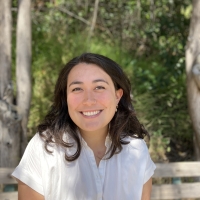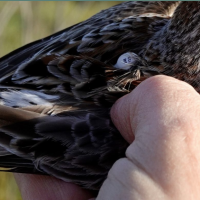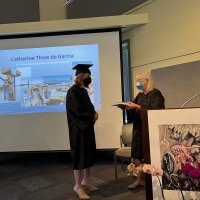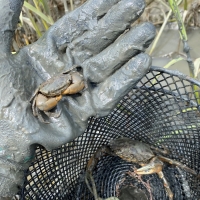Newly decreed NERR’d-Catie Thow, M.S.

Taking the narrow, winding road along Paradise Drive in Tiburon, California, maybe getting carsick along the way, you will pass hillsides teeming with wildflowers in the spring, numerous recently built homes, and sweeping views out over San Francisco Estuary. If you pull off on the side of the road for long enough you can spot Angel Island to the east, Alcatraz and the Golden Gate Bridge to the south. You may even be lucky enough to catch a glimpse of a harbor porpoise. As you travel east along this secluded road, nestled among the hills you will find a place rich in history that many residents of the area do not even know exists. A place that I traveled to all the way from the East Coast to earn my master’s of science degree in Interdisciplinary Estuarine Sciences and the home of the San Francisco Bay National Estuarine Research Reserve ( SF Bay NERR).
As a New England native, I am accustomed to old buildings that have been repurposed to fit today's modern conveniences. As I drove into the Estuary and Ocean Science Center (EOS) for the first time in 2019, I was immediately at ease with this familiar sight. I found huge concrete arches that span the bottom campus, a weathered water silo, and expansive views of San Pablo Bay to the north. Despite this familiar feeling, the campus also conjured up a sense of time-honored perseverance and prosperity, a feeling that was new to me and meeting with then NERR manager, Mike Vasey, confirmed this sentiment.
Today, this diverse history of indigenous, military, and scientific uses shapes the future of the San Francisco Estuary by supporting graduate students who will go on to become coastal decision makers, researchers, teachers and so much more.
Students studying at San Francisco State University (SFSU)’s EOS Center with the SF Bay NERR benefit greatly from this professional partnership. While I came to study at the EOS Center partially because of attractive National Science Foundation funding, I also chose the program because of the partnership between the SF Bay NERR and EOS. Throughout my graduate career, this collaboration did not disappoint. Under my advisor Dr. Frances Wilkerson (EOS faculty), I shaped my graduate project around the alliance with the NERR and came to study aquatic primary productivity and nutrient uptake at Rush Ranch. With the generous support of NERR staff, I was able to further my knowledge of the estuary by helping the NERR with their long term oyster, vegetation and water quality monitoring. This experience was crucial to me, a budding interdisciplinary estuarine scientist, to understanding the diversity within the San Francisco Estuary and the value in long-term datasets. Just as ecological systems are stronger through mutualistic relationships, my partnership with the NERR allowed me to become a more robust, and versatile scientist throughout my studies.
Since 2003 the San Francisco Bay NERR has been contributing to the aquatic science happening in one of the most urbanized estuaries in the world. Together with the EOS Center, its people not only conduct and publish this science, but they train the next generation of Bay professionals. With this impressive reputation, I can say I am glad to call myself a graduate of the EOS Center, even if that included some curves (sometimes as harsh as those on Paradise Drive) along the way.
As I drive away from EOS for the last time as a student, I walk away with so much more than a masters of science. I have become a part of the renowned science happening at National Estuarine Research Reserves across the country. I have formed professional relationships that have helped me grow as a scientist and a human being. And, importantly, I am part of an organization that supports things I stand for like indigenous rights, scientific research, and increasing science communication for all audiences equitably. I move forward with a career that will increase shoreline public access for all, prepare for the impacts of sea level rise, and transfer my knowledge to future generations of estuarine scientists. Once a NERR’d always a NERR’d!
